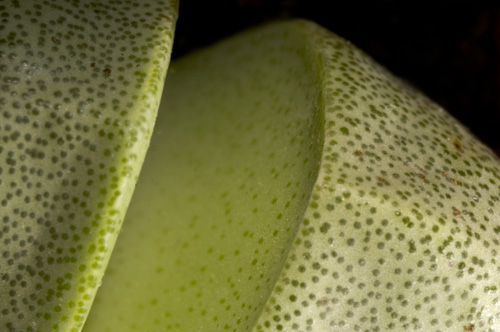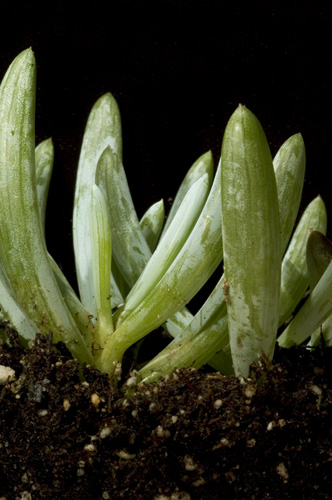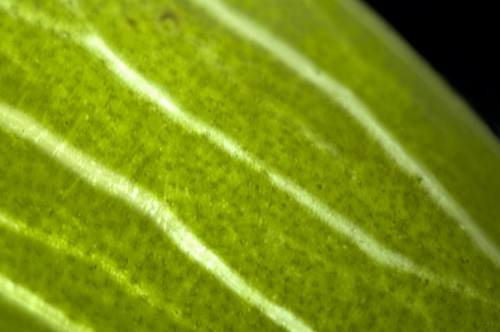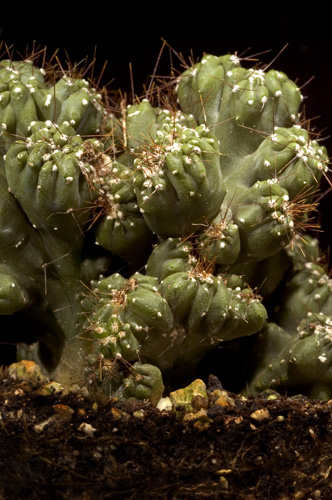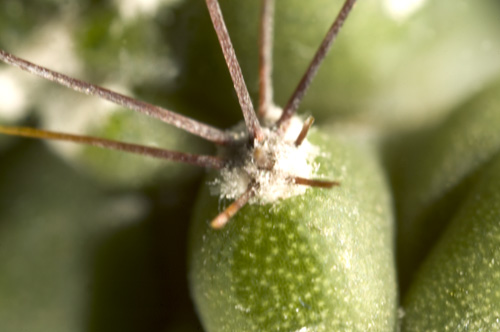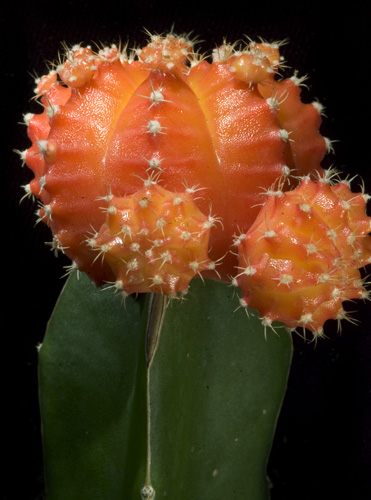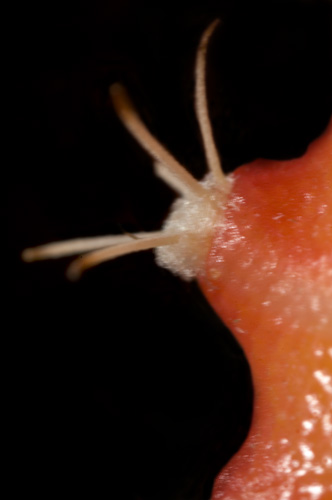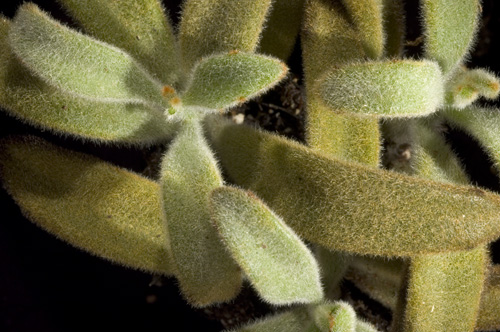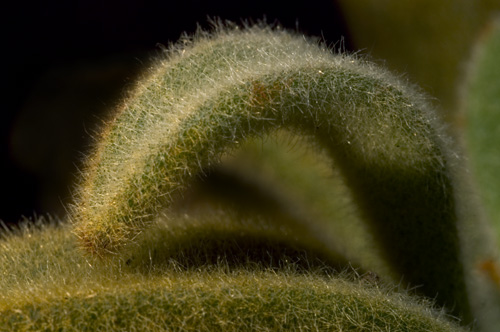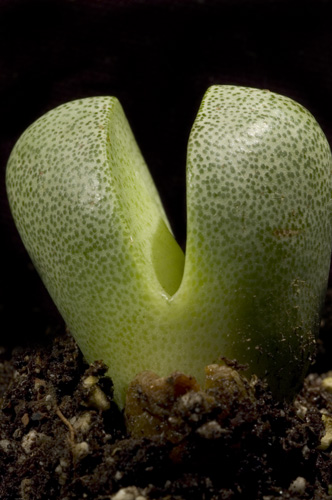
Large thin leaves promote transpiration (the loss of water due to evaporation). Because of this, most plants in the desert have either lost their leaves, or their leaves have evolved into thicker structures, which are better at conserving water. An example of such a plant is the split rock.
Left is a side view of Pleiospilos nelii, or split rock. To the right is a view from the top.
Both shot using a 60mm Macro lens.
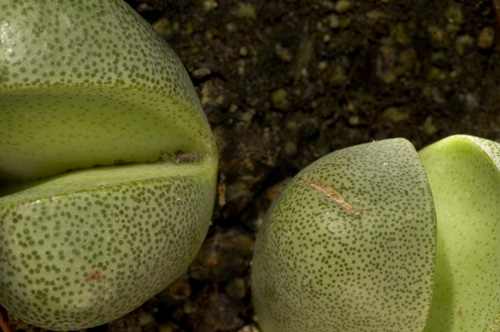
pleiospilos Nelii
Split rock
The use of bellows and a 38mm thimble lens allows a much closer inspection. The split rock's flesh is spongy and moist, with the surface being tough and waxy (like most succulents).
Split rocks come in many different colors and sizes, some looking much more like rocks.
